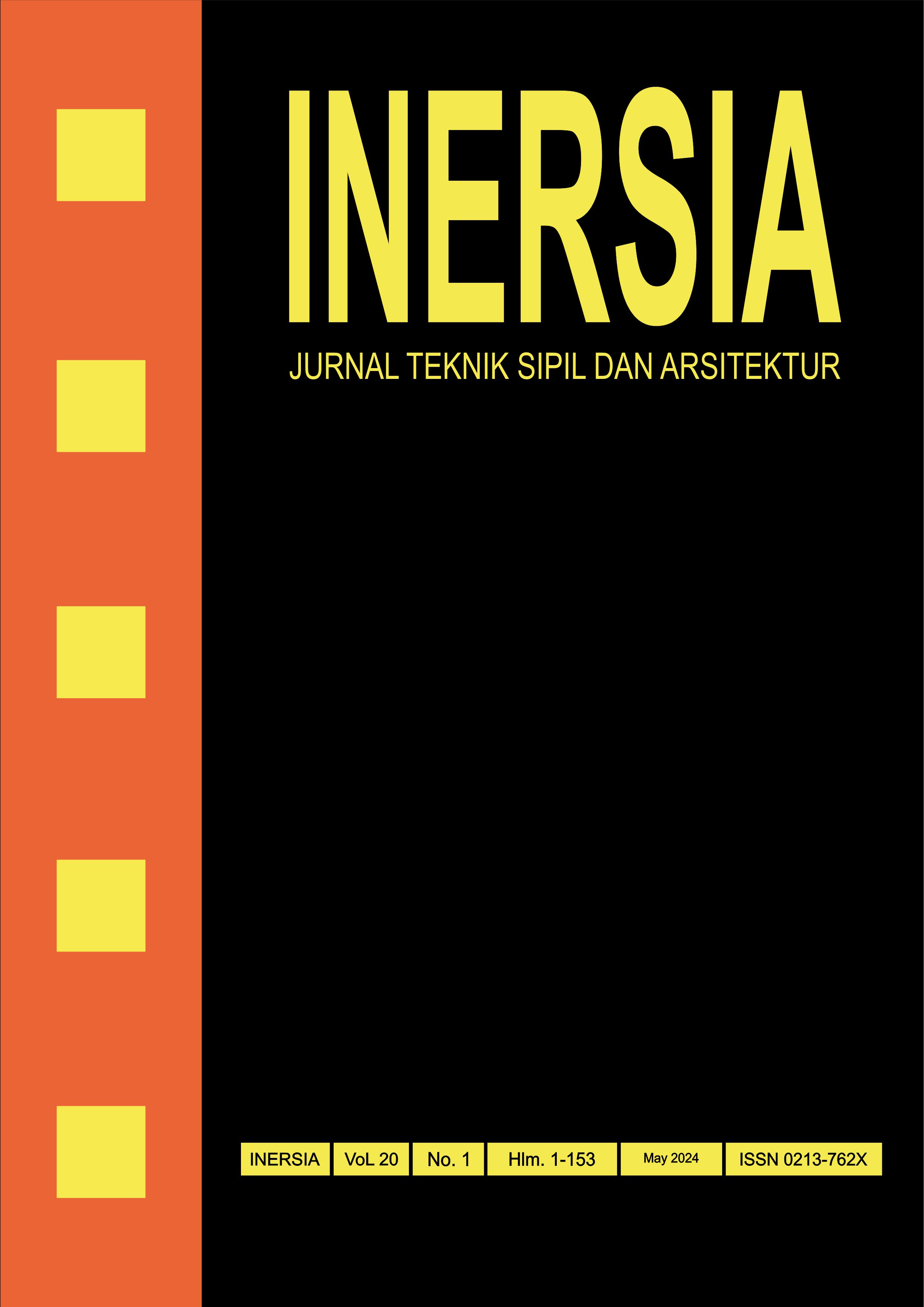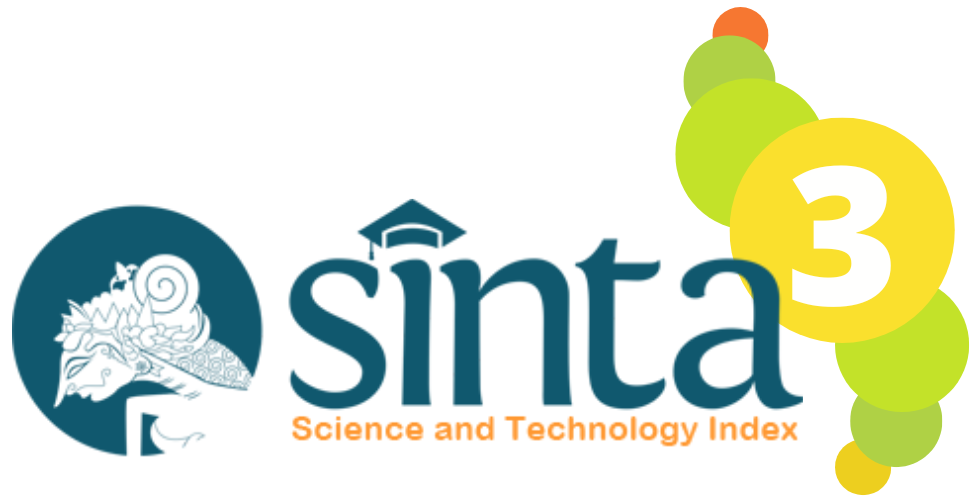Illusion in Architecture: An Alternative for Creating Virtual Environment to Support Efficient Site Utilization
DOI:
https://doi.org/10.21831/inersia.v20i1.72333Keywords:
Energy, Illusion, Real World, Technology, Virtual MaterialityAbstract
Virtual materiality has become a reality due to technological advancements. This affects the evolution of architecture. Land utilization in residential designs is currently unrestricted. Humans still exploit natural land and food supplies to build homes. Conversely, houses that merely use the land for viewing rather than traversing it are an example of inefficient land usage. In architecture, virtual materiality plays a part in creating an artificial world. In order to minimize land consumption, an architectural strategy that may introduce virtual materiality into the real world is required. Illusion is one tactic. Tricks and deceit are given priority in the illusion technique. This program is intended for home users who want to replace their natural surroundings with an artificial one. By using this method, nature can improve without requiring interference from the original environment. Modeling experiments and qualitative research are used in the research methodology. Create suggested concepts by using an architectural methodology. Rendering models and sketches are the research outputs. The findings demonstrate that home design can make use of illusion as a representation of virtual materiality. Through the application of matter illusion techniques, manufactured environments can be made to resemble natural ones. Implementing the material illusion in a trapezoidal home. Screen technology is used to do this. The center of the design is where screen technology is used to display environmental content. big horizontal and vertical sides are necessary. However, this can be a substitute for the natural environment for residents, especially in dwelling design.
References
M. Acuto and W. Steele, Global city challenges: Debating a Concept, Improving the Practice. London: Palgrave Macmillan, 2013. doi: 10.1057/9781137286871/COVER.
A. Picon, The Materiality of Architecture. Minneapolis: University of Minnesota Press, 2021. doi: 10.5749/J.CTV1DWQ1VQ.
K. R. Pyun, J. A. Rogers, and S. H. Ko, "Materials and devices for immersive virtual reality," Nature Reviews Materials 2022 7:11, vol. 7, no. 11, pp. 841–843, Oct. 2022, doi: 10.1038/s41578-022-00501-5.
L. Sí¸yland, "Children's sense-making through exploration grasping physical and virtual materialities," FormAkademisk, vol. 13, no. 3, 2020, doi: 10.7577/formakademisk.3534.
T. Blackman, "Virtual reality and videogames: immersion, presence, and the performative spatiality of "˜being there' in virtual worlds," Soc Cult Geogr, Dec. 2022, doi: 10.1080/14649365.2022.2157041.
S. S. Lagunes, "Casa Albero: an architecture experiment," Docomomo Journal, vol. 2021, no. 64, 2021, doi: 10.52200/64.a.5twr82ij.
C. Norberg-Schulz, The Concept of Dwelling: On the Way to Figurative Architecture. New York, 1985. Accessed: May 29, 2023. [Online]. Available: https://www.amazon.com/Concept-Dwelling-Figurative-Architecture-Architectural/dp/0847805905
V. Skalicky and I. ÄŒerpes, "Comprehensive assessment methodology for liveable residential environment," Cities, vol. 94, 2019, doi: 10.1016/j.cities.2019.05.020.
G. Dickson et al., "Walking on Visual Illusions," Iperception, vol. 12, no. 1, 2021, doi: 10.1177/2041669520981101.
A. Yassin, "Anamorphic Illusion Technology and its Creative Applications in Digital out Door Advertising," International Design Journal, vol. 13, no. 2, pp. 21–30, Mar. 2023, doi: 10.21608/idj.2023.288284.
R. Kaźmierczak and A. Szczepańska, "3D optical illusion as visualisation tools in spatial planning and development," Sci Rep, vol. 12, no. 1, Dec. 2022, doi: 10.1038/s41598-022-20173-z.
Ruth. Bjorklund, The senses. Marshall Cavendish Benchmark, 2010.
A. Petru and P. Frantis, "Using virtual reality for sensory illusion training," in ICMT 2017 - 6th International Conference on Military Technologies, 2017. doi: 10.1109/MILTECHS.2017.7988834.
Y. Jia and R. Qi, "Influence of an Immersive Virtual Environment on Learning Effect and Learning Experience," International Journal of Emerging Technologies in Learning, vol. 18, no. 6, pp. 83–95, 2023, doi: 10.3991/ijet.v18i06.37815.
L. T. De Paolis and V. De Luca, "The effects of touchless interaction on usability and sense of presence in a virtual environment," Virtual Real, vol. 26, no. 4, pp. 1551–1571, Dec. 2022, doi: 10.1007/s10055-022-00647-1.
D. KuÅ¥ák et al., "State of the Art of Molecular Visualization in Immersive Virtual Environments," Computer Graphics Forum, vol. 42, no. 6, Sep. 2023, doi: 10.1111/cgf.14738.
M. Mollazadeh and Y. Zhu, "Application of virtual environments for biophilic design: A critical review," Buildings, vol. 11, no. 4. MDPI AG, Apr. 01, 2021. doi: 10.3390/buildings11040148.
Groat, Linda N, Wang, and David, "A r c h i t e c t u r A l r e s e A r c h M et h o d s."
G. Giordano and P. Gunther, Illusion In Design : New Trends In Architecture and Interiors. New York: Rizzoli, 2022.
B. C. Kress, "Optical Architectures for Augmented-, Virtual-, and Mixed-Reality Headsets," Washington, USA, 2020. [Online]. Available: https://www.spiedigitallibrary.org/terms-of-use
J. K. Moo-Young, A. Hogue, and V. Szkudlarek, "Virtual materiality: Realistic clay sculpting in VR," in CHI PLAY 2021 - Extended Abstracts of the 2021 Annual Symposium on Computer-Human Interaction in Play, 2021. doi: 10.1145/3450337.3483475.
W. Zhao, L. Su, and F. Dou, "Designing virtual reality based 3D modeling and interaction technologies for museums," Heliyon, vol. 9, no. 6, p. e16486, Jun. 2023, doi: 10.1016/J.HELIYON.2023.E16486.
S. Riches, S. Pisani, L. Bird, M. Rus-Calafell, P. Garety, and L. Valmaggia, "Virtual reality-based assessment and treatment of social functioning impairments in psychosis: a systematic review," International Review of Psychiatry, vol. 33, no. 3, pp. 337–362, 2021, doi: 10.1080/09540261.2021.1918648.
Y. V. Lobanova, "The Role of Screen Technologies In the Formation of a New Culture of Emotions and Feelings," Communicology, vol. 10, no. 3, 2022, doi: 10.21453/2311-3065-2022-10-3-116-122.
J. a. Calvo-Sanz and C. E. Tapia-Ayuga, "Blue light emission spectra of popular mobile devices: The extent of user protection against melatonin suppression by built-in screen technology and light filtering software systems," Chronobiol Int, 2020, doi: 10.1080/07420528.2020.1781149.
M. V. Markova, A. R. Markov, M. V. Savina, T. B. Abdrakhimova, I. R. Muharovska, and K. D. Gaponov, "Medical and psychological consequences of using on-screen technologies of informational and psychological influence: analysis of the problem," Wiad Lek, vol. 72, no. 10, 2019, doi: 10.36740/wlek201910133.
R. S. Ferreira, R. A. C. Xavier, and A. S. R. Ancioto, "Virtual reality as a tool for basic and vocational education," Revista Cientifica General Jose Maria Cordova, vol. 19, no. 33, 2021, doi: 10.21830/19006586.728.
M. KrajÄoviÄ, G. Gabajová, B. Furmannová, V. Vavrík, M. GaÅ¡o, and M. Matys, "A case study of educational games in virtual reality as a teaching method of lean management," Electronics (Switzerland), vol. 10, no. 7, 2021, doi: 10.3390/electronics10070838.
L. T. De Paolis, S. Liaci, G. Sumerano, and V. De Luca, "A Video Mapping Performance as an Innovative Tool to Bring to Life and Narrate a Pictorial Cycle," Information (Switzerland), vol. 13, no. 3, 2022, doi: 10.3390/info13030122.
T. J. Stohlgren, M. W. Kaye, A. D. McCrumb, Y. Otsuki, B. Pfister, and C. A. Villa, "Using new video mapping technology in landscape ecology," BioScience, vol. 50, no. 6. 2000. doi: 10.1641/0006-3568(2000)050[0529:UNVMTI]2.0.CO;2.
S. M. Park and Y. G. Kim, "A Metaverse: Taxonomy, Components, Applications, and Open Challenges," IEEE Access, vol. 10, 2022, doi: 10.1109/ACCESS.2021.3140175.
P. A. Kara, R. R. Tamboli, V. K. Adhikarla, T. Balogh, M. Guindy, and A. Simon, "Connected without disconnection: Overview of light field metaverse applications and their quality of experience," Displays, vol. 78, 2023, doi: 10.1016/j.displa.2023.102430.
R. Arnheim, Art and the Visual Perception: A Psychology of the Creative Eye. California: University of California Press, 1974. Accessed: May 29, 2023. [Online]. Available: https://books.google.com/books/about/Art_and_Visual_Perception.html?hl=id&id=Z7LQRiSM1I4C
B. Vale and R. J. D. Vale, "Green architecture : design for a sustainable future / Brenda and Robert Vale.," 1996, Accessed: Sep. 09, 2023. [Online]. Available: https://books.google.com/books/about/Green_Architecture.html?hl=id&id=PpdlQgAACAAJ
E. P. Mumford, Habitat: ecology thinking in architecture: Dirk van den Heuvel, Janno Martens, Victor Muñoz Sanz (eds) nai010 publishers, 2020 ISBN 9789462085565 hardback£ .... Taylor &Francis, 2021. doi: 10.1080/13602365.2021.1984025.
New Murabba, "Al-Mukaab Design Concept." Accessed: Dec. 22, 2023. [Online]. Available: https://newmurabba.com/en/homepage/
Downloads
Published
How to Cite
Issue
Section
License
Authors who publish with INERSIA journal agree to the following terms:
- Authors retain copyright and grant the INERSIA journal right of first publication with the work simultaneously licensed under Creative Commons Attribution License (CC BY 4.0) that allows others to share the work with an acknowledgment of the work's authorship and initial publication in this journal.
- Authors can enter into separate, additional contractual arrangements for the non-exclusive distribution of the published version of the work (e.g., post it to an institutional repository or edit it in a book), with an acknowledgment of its initial publication in this journal.
- Authors are permitted and encouraged to post their work online (e.g., in institutional repositories or on their website) before and during the submission process, as it can lead to productive exchanges, as well as earlier and greater citation of published work.

INERSIA by https://journal.uny.ac.id/index.php/inersia was distributed under a Creative Commons Attribution 4.0 International License











